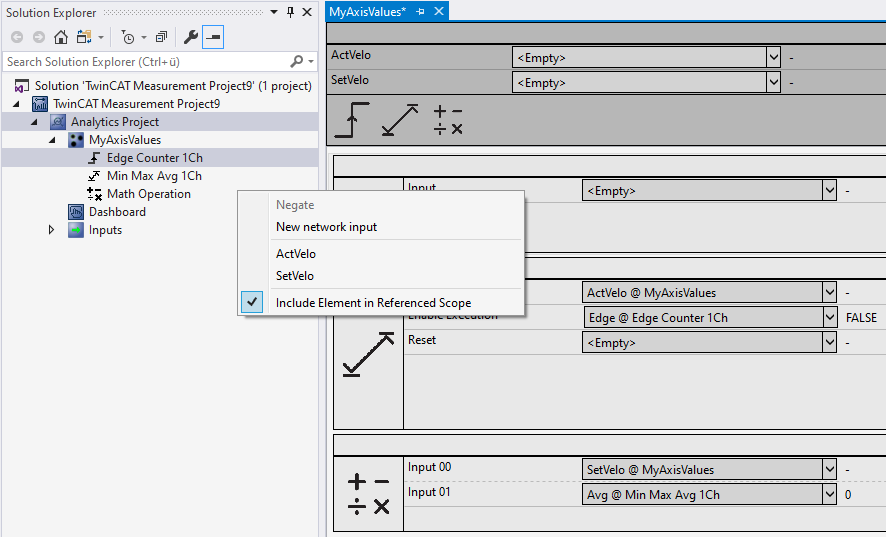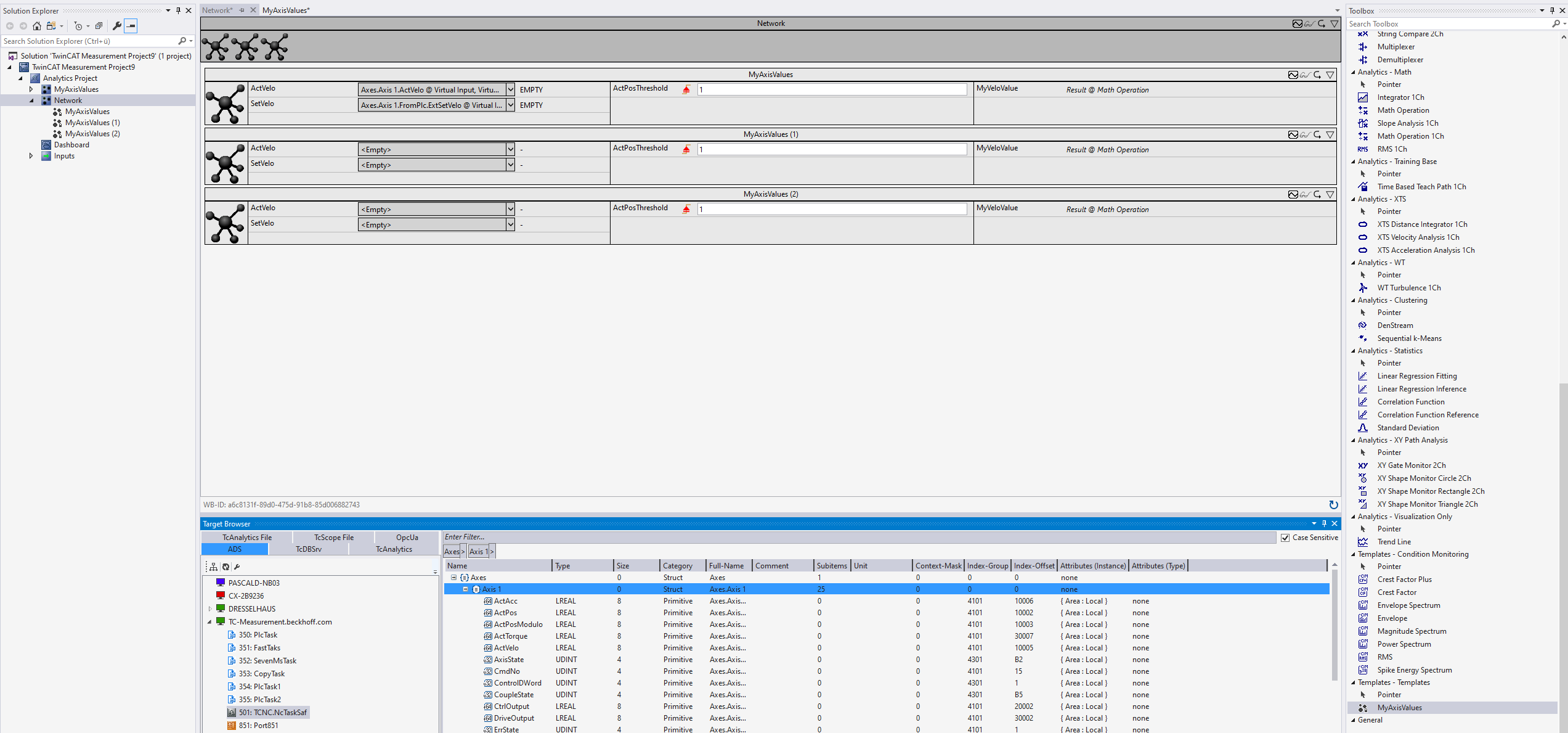Networks as template
Inputs, parameters or even outputs of algorithms within a network can be pinned directly to the outside of the network. Thus, the network itself has inputs, parameters and outputs. This makes it possible to save recurring analyses as templates and to instantiate them several times.
Once you have created an analysis, you must first select which of the available inputs should be visible to the outside of the network. To do this, select the desired input and switch to the context menu by right-clicking. There you can link the input to an existing network input or alternatively define a new network input.

The same procedure is available for parameters and outputs.

In addition to these inputs and outputs, it is also possible to specify dynamic inputs and outputs. These are automatically offered to you when one of the selected algorithms supports this function. The background to this is the option of increasing the number of inputs or outputs on an algorithm via a parameter, e.g. the inputs of the Math Operation algorithm.

Once the definition of the network to be used as a template is complete, you can save it accordingly. To do this, go to Solution Explorer and right-click on the network. Use the Save option in the context menu. You can choose between Template and Closed Template. In a simple template you can look inside after instantiation and see the interconnection of the basic algorithms and also change them. This option is not available for a closed network. However, this does not offer know-how protection! The internal logic is also visible in a possible PLC code generation by the Analytics Workbench.

After saving, the template is selectable in the toolbox and can be used for recurring analyses.

The Target Browser offers a special function.
If the names have been chosen for the network in such a way that they correspond exactly to variables of a structure, you can drag a complete structure such as an axes structure directly onto one of the x-inputs of a network. All matching names of all network inputs and structure variables are mapped automatically.
Scope configuration stored in network template
A created Scope configuration can be saved together with the associated network in a network template, in order to automatically obtain the same Scope configuration when a network is used again.